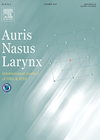You searched for "Children"
Measuring audiological outcomes in the paediatric setting
In this article Marlene Bagatto argues that a range of outcome measures and instruments need to be implemented when working with children and families. She demonstartes how these support both clinicians and families. The primary goal of early hearing detection...Video otoscopy
6 January 2023
| Joanna Lemanska
|
ENTA - Audiology - Paediatric
|
Middle Ear, paediatric, tele-audiology/tele-health, video otoscopy
The COVID-19 pandemic and challenges in offering health services at the time showed how useful telehealth services can be. One of the undoubted benefits of video otoscopy is that both images and recordings can be sent to specialists for assessments....
How can we actually be culturally responsive?
6 September 2021
| Anna Volkmer
|
ENTA - Speech and Language Therapy
Now, more than ever, we need to take action to meet the needs of the students and patients we work with. Black Lives Matter only emphasised how little progress has been made in this area to date. The authors of...
The effects of paediatric tracheostomy
30 April 2020
| Robert Nash
|
Paediatric ENT
|
Caregiver, HRQoL, Paediatric; QoL, Quality of life, Tracheostomy
Paediatric tracheostomy is usually an essential procedure to preserve life, or to allow a patient to function in the community. However, the effect of tracheostomy on the developing child - care requirements, lack of voice, impaired swallow, constant risk of...
Tablet-audiometer school hearing screening in the context of a developing country
This paper presents a novel use of innovation to tackle the challenges of providing school-age hearing screening in low and middle income countries (in this case Nicaragua, second poorest in the western hemisphere), from the creators of a tablet-based audiometer...Join us at CI2023
16 January 2023
Registration is now open for CI2023: Cochlear Implants in Children and Adults, 7-10 June, in Dallas, Texas, USA, with early bird rates until 7 April 2023. The conference will explore current and emerging topics for CI patients across the lifespan....
Valsalva manoeuvre treatment of otitis media with effusion in adults
1 May 2019
| Praneta Kulloo
|
Neurotology, Otology
|
Adult otitis media with effusion, Valsalva maneuver
Otitis media with effusion (OME) is common in children but has a low prevalence in adults. There is some evidence to advocate middle ear inflation as a successful treatment for children with OME. This form of treatment is also recommended...
Role of oral and intranasal steroids in the management of otitis media with effusion
Inflammation is considered an important factor in the pathogenesis and continuation of otitis media with effusion. Theoretically, this may support the use of steroids, oral or intranasal in the management of this condition. This study comprised three well matched groups...Polysolmnography and laryngomalacia severity
Laryngomalacia represents the single most common cause of stridor in infants. Most cases are self-resolving, but a proportion of children will require surgical intervention. This group aimed to analyse the efficacy of polysomnography in determining the severity of laryngomalacia in...Nasal nitric oxide – an inflammatory marker in paediatric allergic rhinitis?
1 July 2017
| Shiying Hey
Nasal nitric oxide (nNO) is mainly produced in the paranasal sinus mucosa and was shown in some studies to have increased expression in allergic rhinitis (AR). Although it represents a potential non-invasive tool for AR measurement, there remains no consensus...
Is the lack of sunshine the reason behind allergic rhinitis?
Deficiency in Vitamin D, an in vogue immunomodulator, has been shown in emerging data to have a substantial pathogenetic role in allergic related diseases, particularly asthma. The concept of a shared upper and lower airway has allowed the natural extrapolation...Childhood speech processing in background noise
1 January 2016
| Hannah Blanchford
|
Auditory development, Auditory processing, Electrophysiology, FFR, Speech recognition in noise, cABR
Normal childhood development of the auditory systems involves mapping sounds to meaning and the neural coding of speech. Children are often subjected to adverse listening environments such as high levels of background noise. This paper aimed to delineate the effects...













